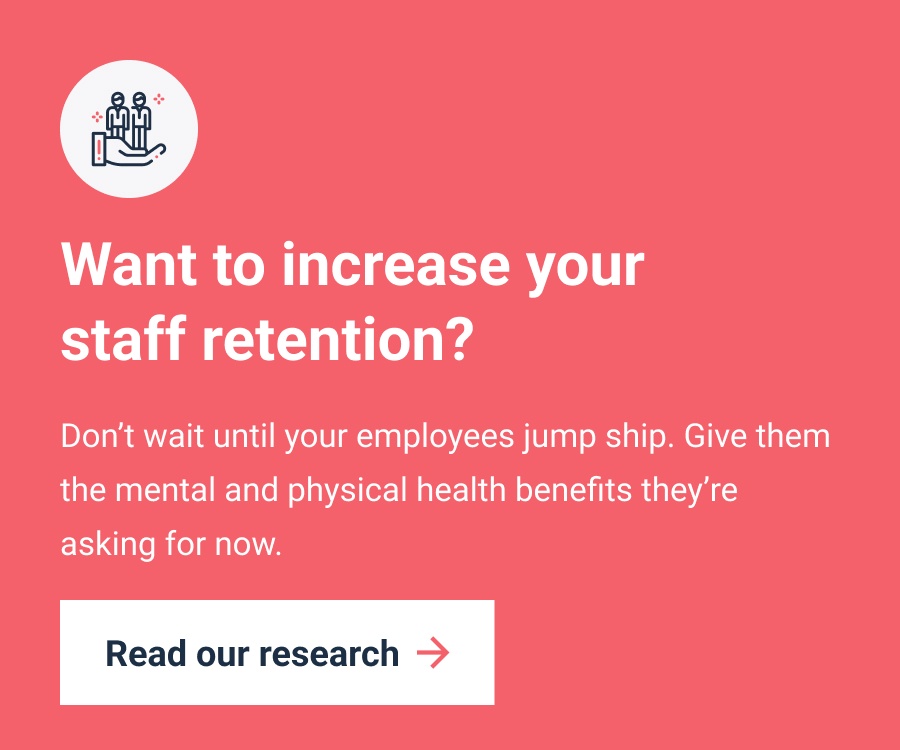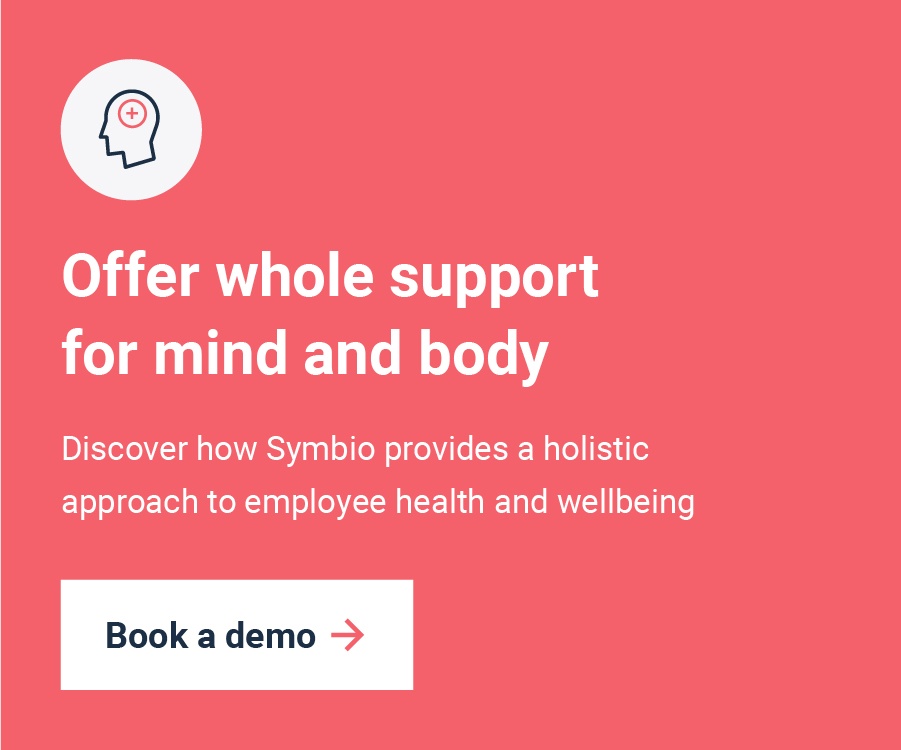In 2018, 74 percent of UK adults felt stressed to the point of being unable to cope. This was before a pandemic that caused stress levels to spike. And before we faced the major readjustments needed to resume life in the aftermath of that pandemic.
Stress happens to everyone, including your employees. It could be work-related, or it could come to work with your people. But a lack of conversation around stress could mean they are left without healthy coping strategies and support.
Stress Awareness Month is an initiative run by the Stress Management Society. Each April, they aim to spread awareness about stress management. This includes effort to reduce the stigma around stress and mental health issues.
So, what can you do to offer support to employees as part of Stress Awareness month?
What is stress?
First, it’s important to understand what stress is and what it means from a health and wellbeing perspective. Stress ‘is our body’s response to pressure’ according to the Mental Health Foundation. We feel stress ‘when we experience something new or unexpected that threatens our sense of self or when we feel we have little control over a situation.’
Stress is not always a negative thing according to the Stress Management Society. Centuries ago, it helped hunters sense danger and enter ‘fight or flight’ mode. It kept them safe. And it can be motivating.
But we experience stress for many reasons. Stress comes from positive things like a new job, moving to a dream house, welcoming a baby or a planned holiday. But it’s also the result of negative things like job loss, excessive demands at work, conflict in relationships or financial issues.
Stress differs from anxiety because stress results from real, external circumstances. Anxiety is internal and most often centres on worries about what might happen. Stress, or the events that bring it on, can lead to anxiety. Burnout is when prolonged stress leads to exhaustion.
People experience varying degrees of stress. And how stress affects a person can differ according to age, region and even education. So, what happens when it is all too much?
How can stress affect your employees’ health?
The Stress Management Society puts symptoms of stress in four categories so you can spot when stress is affecting your workers:
- Cognitive. Employees might show poor lack of judgement or struggle to concentrate. Signs would show in declining work performance with unusual errors, poor memory or a sudden lack of motivation.
- Physical. A person under stress could experience high blood pressure (which can lead to cardiovascular problems), aches or even indigestion. Stress might also manifest in stumbling speech, sweating, tiredness or headaches.
- Mental/emotional. Stress causes a rise in anxiety, overwhelm and irritability. Signs include crying, overreaction and sensitivity.
- Behavioural. Stress changes people. It’s noticeable in behaviour like isolation or lack of sleep. Stress could also come out in uncharacteristic outbursts or bullying and criticism.
At work, symptoms like these can contribute to more sick leave. Employees lose an average of 24 days of work every year for poor health as a result of work-related stress. That’s just under 10 percent of working days every year.
Stress also contributes to presenteeism when staff comes to work on days they should not. Presenteeism often means a warm seat, but a sacrifice in productivity and quality of work. Symptoms of stress could also create a negative environment for other workers.
Five ways your business can help your employees cope with stress
One study described stress as a time when demands on a person ‘outstrip’ the resources they have to cope. To help your employees through stress, you can strengthen the resources your workers have to cope.
- Spread awareness
Your workers can probably feel their stress and may know the cause of it. Yet they might not realise its effect on them and their work. They might also be at a loss for how to cope or manage, especially if the stressor is significant, like the loss of a loved one.
The primary way to spread awareness is to communicate openly about it. You can share information and tools to manage stress. This includes resources, factsheets and clinically-valid advice like you would find in Symbio.
- Support Stress Awareness Month
If you need help to start the conversation, Stress Awareness Month can serve as a catalyst for your conversation. It happens throughout the month of April and spreads awareness about the effects of stress and ways to manage it.
As an organisation, you could participate in the ‘Reduce stress in 7 days’ challenge or the 30 day challenge to form new habits to manage stress.
- Conduct a workplace stress test
If you feel like the signs of stress are showing up in many of your workers, it might be coincidence. It might not. A recent labour survey found over 900,000 workers suffered from work-related stress, depression or anxiety.
If you worry the job is the root cause of your employees’ stress, you could consider a tool like a stress test. A workplace stress test will find the pulse in your workplace. If the stress is coming from within, you might be able to relieve some of it by shifting workloads or rethinking workflows and deadlines.
- Promote healthy habits
Picking up a healthy habit is a good idea at any time. But small, positive changes can also grant your workers a small sense of control when things feel overwhelming. And many healthy habits have been found to alleviate stress.
This includes better sleep, healthy eating and exercise (even at work). It also includes connection with community. These habits are beneficial at any time but serve as an anchor in times of stress.
You can also encourage employees to forego unhelpful coping strategies. It’s best to avoid coping strategies which have detrimental long-term effects or cause dependence like smoking or drinking.
- Enhance your wellbeing benefits
A third of organisations have increased budgets for wellbeing, but tailored benefits to address specific employee needs vary widely between organisations. And these types of benefits matter to today’s talent.
A survey found that 50 percent of workers would accept a pay cut if it meant more tailored benefits and three-quarters of workers find tailored benefits motivating.
Getting more specific about perks doesn’t have to be complicated. The Symbio app offers employees support 24/7, including information and advice to manage stress. Addressing stress for the wellbeing of your people is a step toward more tailored benefits.
Support your workers wellbeing through stress management
Stressful events are sometimes short-lived. However, they are often unpredictable and out of your worker’s hands. Either way, stress is a common human experience.
When stress comes into the workplace, it has a negative impact on your people and their work. A company that cares about its people and their wellbeing gives stress its due attention and its people the resources to cope with it.






